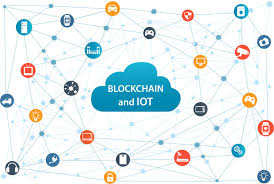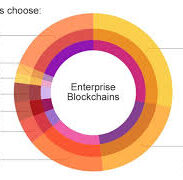Are you familiar with Blockchain and Internet of Things (IoT)? These two technologies are revolutionizing how the world uses connected devices and shares data. In this article, we will discuss how Blockchain and IoT can work together to form smart, cleaner, and more secure networks.
What is Blockchain?

First, let’s talk about blockchain technology. A browser is known as a chain of blocks, each containing a collection of data. This forms a distributed ledger—a digital record shared across many computers. This means that no computer can change information and is thus entirely secure.
Blockchain systems use proof of work to maintain trust and security of data from manipulation. This means that blockchain networks are ideal for handling sensitive information.
What is the IoT (Internet of Things)?
Now, let us take a moment to discuss the Internet of Things (IoT). The Internet of Things (IoT) ecosystem denotes such interconnected devices over the Internet. These devices can range from smart thermostats in your home to factory sensors that monitor the supply chain. These devices gather IoT data and interact with each other to function and make decisions.
IoT devices include smart fridges, fitness trackers, and even smart cars. IoT-based devices work on networks to send and receive information for seamless operations.
How Blockchain and the Internet of Things Work Together
A combination of Blockchain and IoT does wonders! If you have a NOVA backup, the Nova backup will still survive to ensure no loss of IoT-connected devices. Blockchain allows IoT networks to be more secure and effective. Here’s how:
Security: Blockchain technology helps secure the data sent and received by IoT devices. It keeps all the data secure, making it difficult for hackers to change it.
Smart Contracts: Blockchain can use smart contracts to automatically carry out tasks without requiring a mediator. That means smart devices in intermediary environments can also communicate directly with each other, for example, to control the temperature in one room, where a smart contract between the thermostat and other smart devices agrees upon the temperature in that room.
Decentralization: A noteworthy aspect of Blockchain and IoT is their decentralization. Usually, data is controlled by a central authority (for example, a company). However, with blockchain networks, data is spread out over multiple computers, so it’s more difficult for someone to control or alter.
Faster Data Exchange: IoT devices can share data more quickly and securely with blockchain systems. For instance, IoT devices can follow the movement of goods in supply chains, and blockchain technology can document each step to guarantee accuracy and security.
Use cases of Blockchain and the Internet of Things.
Blockchain and IOT combination use cases could already be seen in different scenarios. Here are a few examples:
Smart Homes: A smart home is interconnected with devices such as lights, thermostats, and security cameras. The combination of Blockchain and IoT provides the security needed for everything to run fearlessly and securely.
Supply Chains Companies are leveraging Blockchain and IoT to track products through a supply chain. Sensors can monitor the temperature and whereabouts of goods in transit, and blockchain technology guarantees the accuracy and immutability of all data.
Medical: Hospital IoT devices can track vital patients’ health data. Blockchain allows doctors and patients to share this data securely with each other, making the entire healthcare industry efficient and safe.
Advantages of Blockchain and Internet of Things
A mix of Blockchain and IoT gives us quite a few essential benefits:
Enhanced Security: The data shared by the IoT devices is regenerated from any action through blockchain technology.
Trust Worthy Information: Compelled by Blockchain and IoT, The information exchanged between gadgets is legitimate and solid.
Efficiency: Smart contracts enable the automatic completion of tasks that typically require a third party, such as confirming transactions or agreements.
Decentralization: There is no single point of control as there is no central authority in the system, increasing transparency.
Conclusion
One of the world’s most potent tech combinations, creating a new way of interacting with connected devices, is Blockchain and the Internet of Things. Integrating them can lead to better systems by leveraging blockchain networks for security and IoT devices for data collection and exchange.


